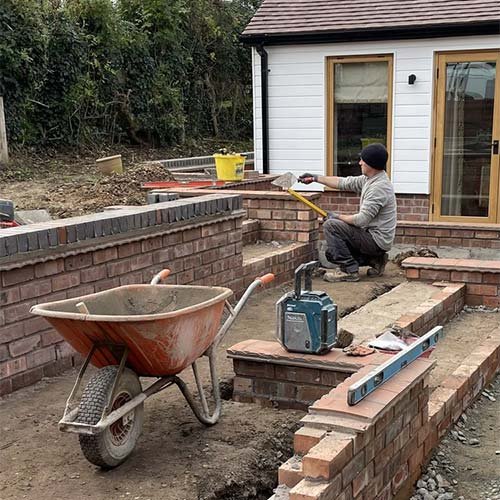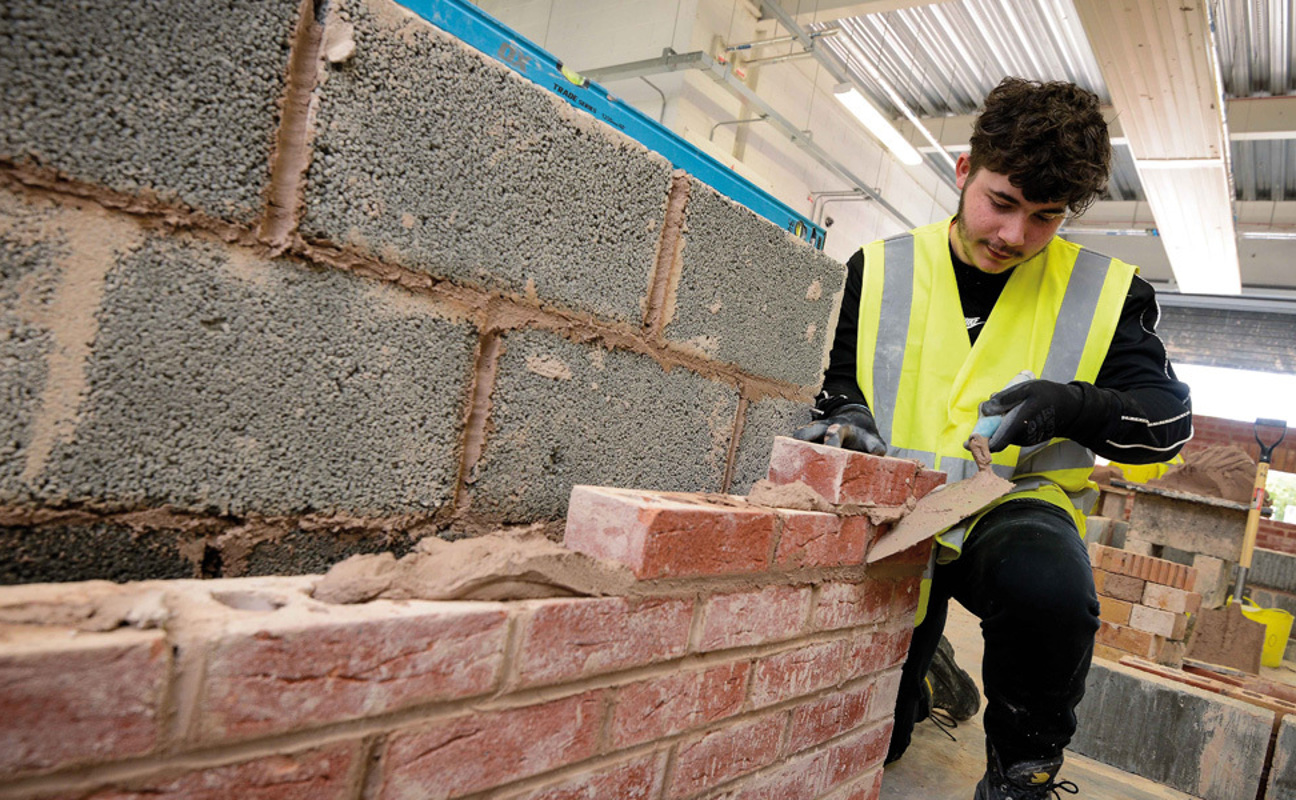Fascination About Bricklayer Auckland
Wiki Article
Bricklayer Auckland for Dummies
Table of ContentsExamine This Report on Bricklayer AucklandThe Buzz on Bricklayer AucklandThe Basic Principles Of Bricklayer Auckland Not known Facts About Bricklayer Auckland
The difference in between Absolutely no and also traditional stonework is in the laying of the brick. The block is no much longer pressed up and down, yet tilted.On top of that, we likewise focused on a great proportion in between the length as well as size of the block so that it is perfect for functioning with a stretcher bond. By doing this the job continues quickly. Advantage, For a specialist by doing this of working is barely an obstacle. He can function with the material/equipment that recognizes to him.
Bricklayers are a vital career in the construction industry, accountable for laying blocks, pre-cut rock as well as cinder block in mortar. Bricklayers construct, extend as well as repair domestic and also commercial structures, and also various other frameworks such as structures, wall surfaces, smokeshafts or attractive stonework. Reaching the end of a task and also being able to claim 'I built that' uses an actual feeling of success for brickies.
Your time as a bricklaying apprentice will commonly be split in between your company and also training provider (such as a college), with at the very least 20% of your typical functioning hours invested on training. Your training might occur every week, on a monthly basis or in a separate block of time, and also it can take location at your area of work, at your training carrier or online.
Bricklayer Auckland Fundamentals Explained
When researching building and construction, you invariably uncover that any kind of new or ingenious suggestion has in fact been attempted over as well as over once more, typically extending back years. One of these new-but-actually-old suggestions is the suggestion of a mechanical bricklayer, a machine to automate the building and construction of stonework wall surfaces. It's very easy to see the allure of this idea - stonework building and construction appears nearly completely fit for mechanization.It doesn't seem like it would certainly need physically intricate activities - each brick obtains a layer of mortar used, as well as is merely stocked location beside the previous one. As well as due to the fact that each brick and mortar joint is the very same size, placement is almost deterministic - each block is the exact same set range from the previous one.
These machines could not pick up anything regarding their setting, or action where a brick required to go - they simply extruded a layer of mortar and mechanically placed a block at normal periods (Bricklayer Auckland). It's uncertain the amount of of these devices ever made it beyond the attracting board, yet a minimum of one of these (John Knight's) was made use of to build a brick wall that presumably still stands today.
Throughout redirected here the years, masonry has actually decreased in value as a building technology in the developed globe, as well as with it the rate of interest in automating it. Unlike with concrete 3D printing, where there are loads of efforts to create the innovation, I can only locate a handful of present efforts to automate masonry. Bricklayer Auckland.
Bricklayer Auckland for Dummies
It can placing blocks in tight corridors or intricate corners, and Hadrian can construct all the wall surfaces of a little structure with simply a couple of steps of the automobile. Hadrian can currently establish about 200 blocks a hr, however they're aiming to be able to do 1000 blocks a hr or more (the blocks it establishes are various from the block masonry made use of in the US, but in United States masons can set somewhere in the area of 400 blocks a day).
SAM has a series of sensors to make up for the motion of the platform and also ensure it's placing blocks level, and also can collaborate with blocks of all different dimensions (though it will not build CMU obstruct walls). It obtains mounted to a movable scaffolding that's increased slowly as the wall surface is completed.
The promotional product on Construction Robotics' internet site suggests that it's no much longer their major focus - even more focus is provided to their various other product, MULE.Other than SAM as well as Hadrian, there are a few other mechanical bricklayers in numerous stages of advancement. Craftsmac, a firm out of India, just recently announced a robotic mason made use of for building CMU walls - it appears somewhat similar to SAM, a rolled chassis with a robot arm, site conveyor, as well as mortar mixer placed to it.

Some Known Facts About Bricklayer Auckland.
A a little various category of equipments intended at boosting masonry productivity is what I'll call "masonry aides". These are their explanation makers created to help with physically lifting the block (they appear to be extra typical with block than block) as well as taking the strain off the mason, while still permitting the mason to manipulate it right into setting, Masonry aides date from at the very least 1994, when the armed forces explore MOTHER, the Mechatronically Assisted Mason's Aid.
Report this wiki page